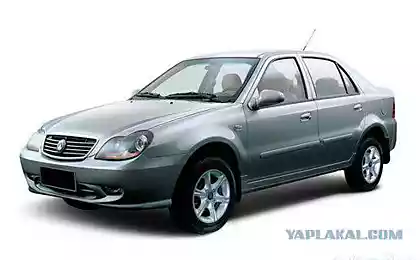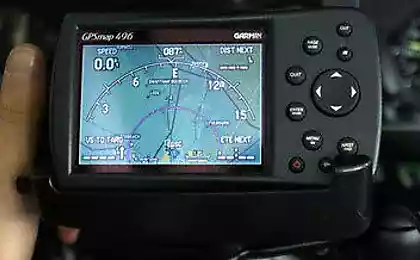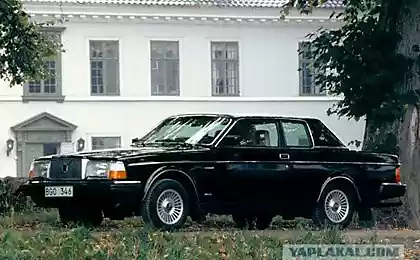966
Market overview of new minivans
Market overview of new minivans. "Five plus two" and others.
Click
In Russia, on the official market of minivans are not too in demand - in the passenger segment of their overall share in the past year, though increased slightly, but still amounts to less than 5%, and the models on sales tumbled. It is based on kompaktven and other categories, while the defendants with three rows of seats and less. Of course, for such a modest figure, not only affects small families of Russian families, but also the high cost of such vehicles, so they buy for personal use has lost relevance to the massive attack sverhuniversalnyh SUV. For corporate and business purposes is also a "non" - are in the course of over-capacity vans.
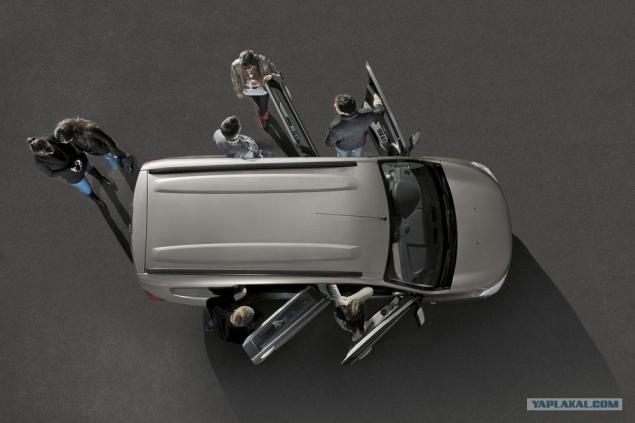
A bit of history
However, a private interest in cars with increased capacity in the country was for a long time. About marital bliss on wheels when you can sit down and load "the apartment", but still with features camper, dream of many. Yes dreamed about it themselves avtoinzhenery: "The Soviet Union needs hundreds of types of bodies produced in thousands and hundreds of thousands of copies, bodies not only practical, technically advanced, user-friendly, and beautiful." This is a wonderful word avtokonstruktora, designer and writer Yuri Dolmatovski, domestic ideologue wagon-car, whose conceptual work on "minivan" substantially ahead of time and might even please the people 50-60-ies. In this case, for example, characters in the film "Three plus two" went to the sea is not on a sedan "Volga GAZ-21" and absolutely worthless for such purposes "Zaporozhets" and on some domestic luxury "grand tourists" , commercially available based on the unique prototype US-013.
US-013 (pictured left). Concept odnoobemnika 1951 authored by JA Dolmatovski for its time was outstanding not only in the Soviet Union. Monocoque length of five meters with the setting on the roof doors, fully independent suspension, rear engine (and originally planned boxer) and automatic (!) Gearbox. With smaller dimensions than the winters interior was roomy - this is the leitmotif of the concept
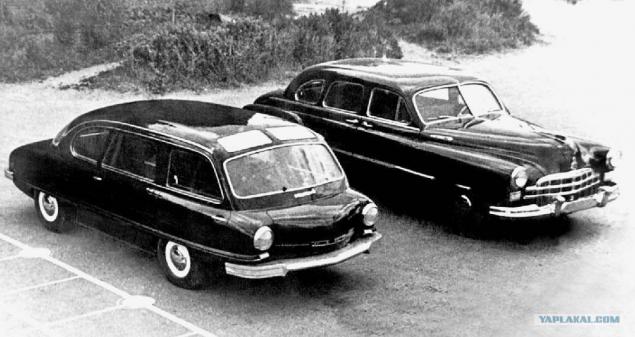
Alas, even in Soviet times, these dreams remained unfulfilled - five-year plan did not include the development of multi-car mass application. Accordingly, even if they wanted to engineering design housing industry could not offer ordinary citizens the serial, and most importantly - a relatively inexpensive minivan or even a wagon with increased capacity (OLA). But this does not mean that they were not at all - experienced, experimental, improvised, and even small-scale versions of "monocab" still appear.
Yes, what! Suffice it to recall glimpsed in the comedy Gaidai "Caucasian Captive" incredible for the time "mikrach" with elements Aerodesign. And in fact it was not a foreign car or piece-homemade. A variant of the first Soviet minivan called the "Start" and appeared thanks to enthusiasts of one of the auto-repair enterprises in the USSR. On units GAZ-21 with an original body of fiberglass in the early 60s it was made more than a hundred copies, including the option camper. Industrial development of this "custom" will not work, but because of the film and "illumination" at the Exhibition of Economic Achievements of the people he played the role of promoter of a car with increased capacity.
Minibus "Start". This famous fiberglass "custom" for the GAZ-21 units at the beginning of the 60s even won the "high" approval of the government. However, for a wide "development" of a private project was too expensive and the raw, all over small-scale assembly and advocacy role monocab
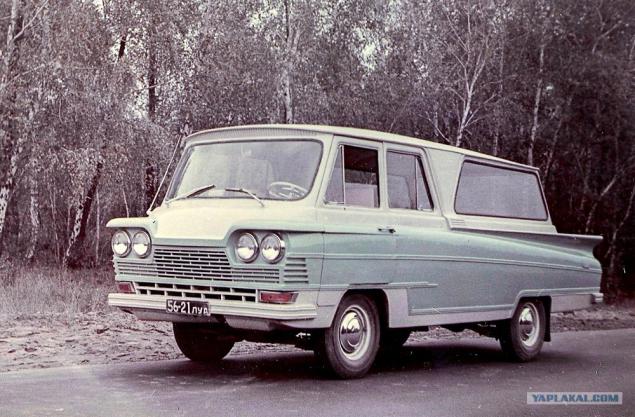
After all evolution in our country and abroad minivans get as a kind of symbiosis with increased capacity (OLA) and "vagonnikov" - so-called polukapotnoy layout where the interior of the engine and the front wheels: spacious, safe, with optimal driving characteristics. It is believed that in the present understanding of the minivans were formed in the '80s, when the United States emerged Chrysler Voyager (ilk counterparts on concern) in Europe Renault Espace, and in Japan - Mitsubishi Space Wagon.
At the same time, the project AZLK Moskvich-2141 work was carried out to establish its minivan, the appearance and functionality of the interior, he did not concede, and in some ways, and superior foreign analogues. The same transformation of seats seems to include all possible options, including a configuration with a turn down towards each other - right now, not all foreign minivans offer such an opportunity. Scale models were built (by the way, looks very similar to the Mitsubishi Space Wagon), but that's all over. Attempts to revive the idea in the mid-90s, too, failed.
Russian «Hope»
Yet an example of how domestic minivan ever mass production there - under the brand name of AvtoVAZ. Created on the basis of an extended "Niva", the 7-seater monocab VAZ-2120 unambiguously called "Hope" and was a completely original design. It was the first domestic car is a minivan with the layout - polukapotny with "vertical" landing and three-row seating. Plus a permanent four-wheel drive, together with the big wheels and high ground clearance. And it is the only example in the Russian automobile industry, when the old dream embodied let in small, yet mass production - from 1998 to 2006 in the RFP was issued more than 8,000 copies.
And in 2002, the car has undergone a restyling - rather ugly chetyrehglazogo "muzzle" there was a decent lined with lights from the "tens". But as often happens with us, the product is not ripe or overripe, in general, does not fit harmoniously in the era - the ratio quality / price does not hold water at a time when the market was already possible to buy foreign "vans" for every taste, including " terrain. " Plus devouring offensive segment SUV. Demand fell, rolled up unprofitable production - "Hope" died first and last in the subject of domestic minivans.
VAZ-2120 "Hope»
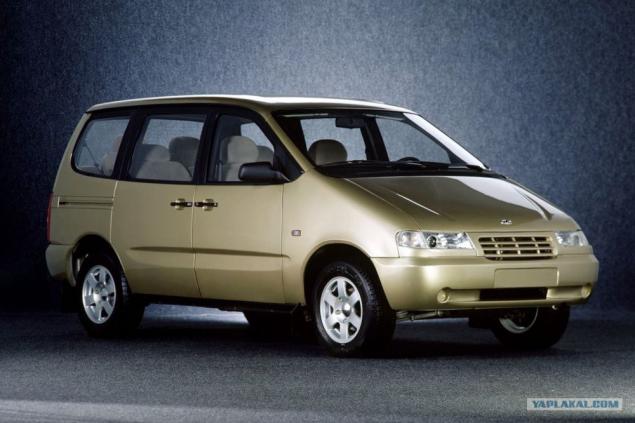
In any case, "passenger", because "the cargo" chassis serial domestic minivan yet appeared - at the turn of the century GAS released more compact than the Gazelle, a family of "Sobol", where there was a place for the passenger version, including "luxury" " Barguzin ". Roughly, but the topic is closed without question: polukapotnaya layout, rear-wheel drive with single rear wheels, independent front suspension and a roomy interior with accommodation options not only ten, but six passengers with the terms "increased comfort". There are versions with four-wheel drive! It would seem, here it is, our global revenge in this segment. And yet, as the family car "Sobol" / "Barguzin" did not get the broad "approval", which could count the "father" of domestic MPV Yuri Dolmatovsky.
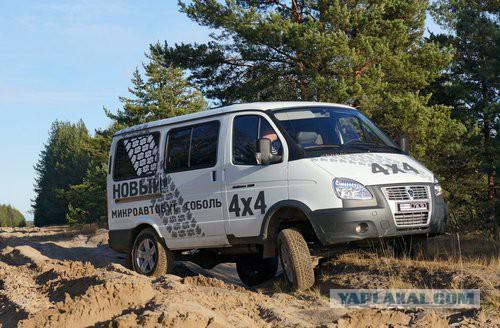
GAZ "Sobol" / "Barguzin»
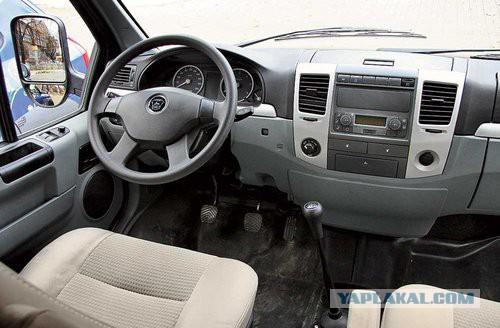
Yes, truly meet the demand for this type of transport only happened after the collapse of the Soviet Union, when the country said "welcome" foreign auto industry. First and foremost, of course, through the second hand, because of the new proposal did not differ democratic. But there was something exceptional - then under a new designation MPV (Multi Purpose Vehicle) began to appear a lot of machines. Besides those mentioned above, since the mid 90's intensified onslaught of Europeans: there was jointly developed by the front-wheel trio Ford Galaxy, VW Sharan and Seat Alhambra, and the cooperation with Fiat PSA issued a quartet of their similar monocab.
Noticeable diversity makes Japanese. Thus, Mitsubishi, along with front-Space Wagon offered and all-wheel drive version, moreover, in the arsenal had completely "off-road» Space Gear 4WD - minivan on an aggregate basis of Pajero. Honda is the serial output in the space of his "sons": in addition to the traditional seven-seat Shuttle (analogue Odyssey) and a little less time to Stream to please and very original FR-V. He was even smaller and differed only two rows of seats, but with an optional third borough ahead - with the expectation of the child. It was an interesting option kompaktven (length 4285 mm) with advanced capabilities in the literal sense, but it was sold, however, short-lived (2004-2009). In addition, we curled up on this model the company's activities in this segment.
Mitsubishi Space Wagon
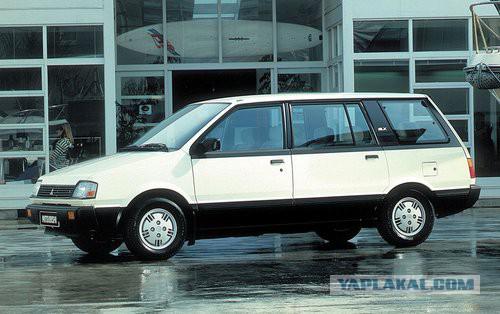
and Toyota Previa
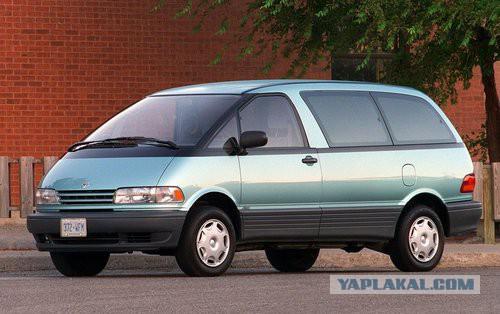
On gray channels received original minivans Toyota Previa, who for 90 perceived as descended from the podium concepts - spherical body, "space" interior and the unusual layout of the chassis with rear wheel drive and placing the engine behind the front axle almost horizontally beneath the floor. If you do not touch the issues of ease of maintenance, a car is probably closest to the realization of the ideals of threads monocab on all key parameters (design, storage space, security, manageability).
Our time
But dynasties minivans on the official market all somehow did not develop - model appears not very loud, and so quietly went. And now the situation is ambiguous. On the one hand, the segment is multiplied its aggressive use of passenger and cargo platforms in various configurations interior layout. But on the other hand, the Russian market is still seen instability offers competitive advantages and weaknesses, especially in models with a capacity of more than five people. With innovations in sparsely-term, also in the light of the current situation, manufacturers change their views of the market. However, not so long ago some people were able to "blow up" the segment.
Sales of some wagons and minivans with the possibility of three-row passenger accommodation in the Russian Federation for 2013 (according to AEB)
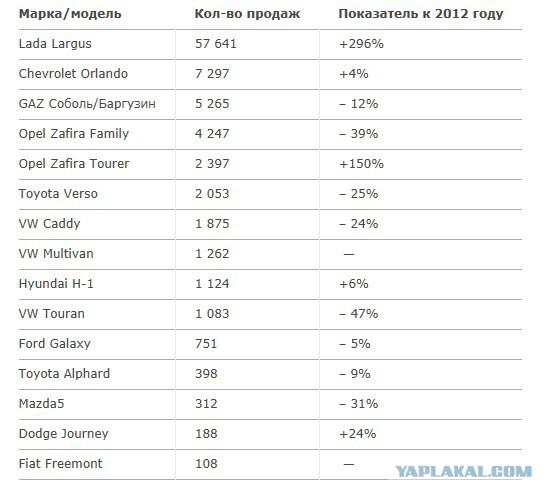
Let your minivan at AvtoVAZ disappeared, the theme here safely returned after six years: in 2012, this is the same area gave OLA People dreamed of in the Soviet Union - Lada Largus. With a length of 4470 mm and a height of 1636, today is the most affordable and read - foreign (in fact, renamed Dacia Logan MCV) station wagon with a high roof and the ability to accommodate three-row passengers. Quintuple nominally, Largus 7-seater version comes with an improved version of equipment, on the third row of seats can be arranged not only children, while still a small trunk with 135 liters. That's just an understanding of the scheme 5 + 2 is not quite typical - backseat whole or recessed into the floor, folded vertically. That is, for a full cargo volume Rear sofa have just dismantled, but this is not difficult.
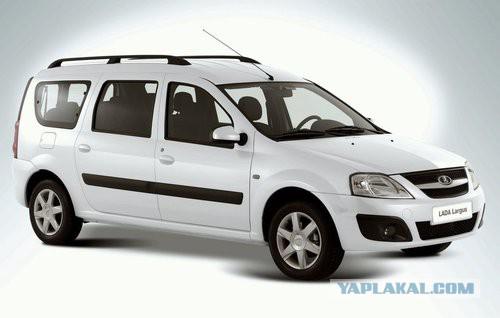
Lada Largus. Versions 7 seats (with driver) are available with two engine options and trim levels improved "Norma" and "Lux", which means at least two airbags, ABS, air conditioning, heated front seats, CD, AUX, and even Bluetooth. Version "Luxury" adds tripcomputer, advanced electro, tumanki, alloy wheels, leather steering wheel, roof rails
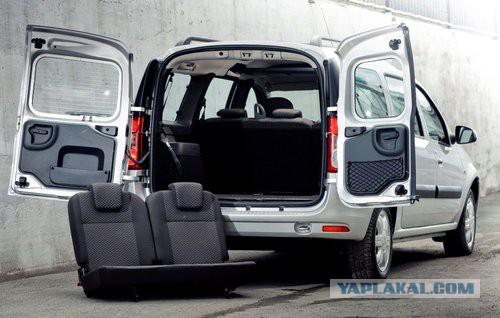
Around analogues for Largus no direct or indirect. Because even a group of "utilitarian" kompaktven family of passenger and cargo vans type Fiat Doblo Panorama, Renault Kangoo and Citroen Berlingo can only compete in terms of simplicity and functionality, but with the 5-seater version and a higher cost.
In this group, however, stands out Volkswagen Caddy, where passenger family Kombi covers many needs, including (optional) in the all-wheel drive. Here and korotkobaznoy versions have the opportunity to order the third row of seats, and to elongate (4876 mm) versions are ready Maxi 7-seater versions. In this case, the third row is also not "drown" in the floor, but when fully decomposed seat trunk is a decent 530 liters - this is a full-size minivans indicators. In addition, already in the database Caddy relatively well equipped (two pillows, ESP, air conditioning, power accessories heated washer nozzles), and Maxi range offers a choice of two engines - petrol 1 2 turbo diesel and 2, 0 liters. But here and the price is not arguing with the models of economy class.
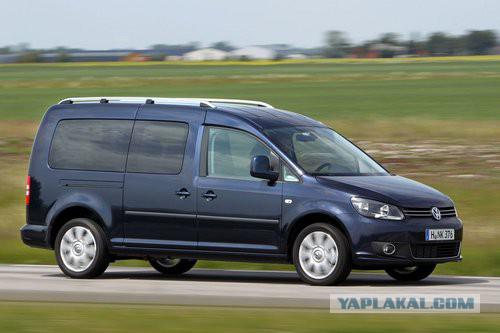
Volkswagen Caddy
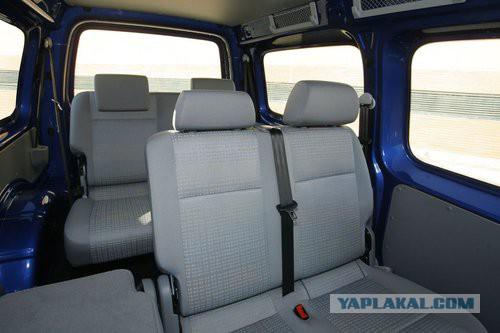
At the end of the year, if the plans will not change, will Ford Tourneo Connect a new generation, which will also be passenger versions. Perhaps the price is less than a Caddy, but somehow I can not believe that this change the situation.
Kompaktven, built upon a passenger C-segment models suggest high technical level of comfort and equipment already in the database. Modern models are generally all the places of the second and third row of separate, which makes a highly flexible interior transformation. This is only the third row is optional, more precisely, in his presence has its own nuances. So, the new Toyota Verso (length 4440 mm) of five complete sets only option 5 + 2 considered for the most prestigious in the literal sense - a version of the Prestige and the highest price, but why not make a choice? Sales, though not the lowest, but obviously at the expense of the less expensive 5-seater version.
Toyota Verso
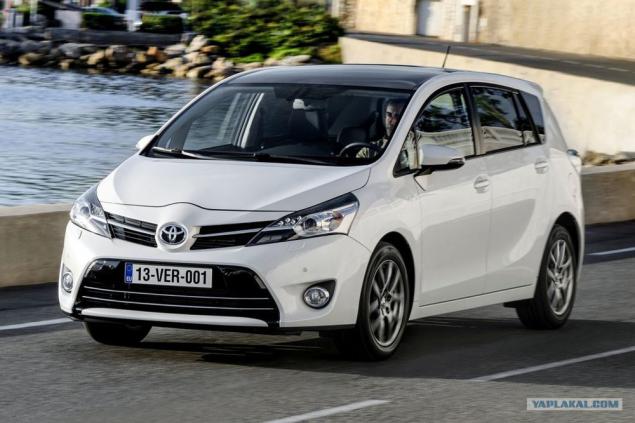
Another approach at the Mazda5 - then a bigger size (length 4585 mm), the engine with a box of conventional (2, 0-liter aspirated and 5-speed automatic transmission), with seven seats split third row normally, independent rear suspension and a sliding door. Two versions of the equipment cover all needs, except perhaps the most advanced of the whims of the media. Here it is, a sample of the many values in the classroom. But the price is also bites, as evidenced by the small and falling sales. Meanwhile, the model designed to "stretch" the platform of the previous "three" is already coming off the stage - during 2014 it is still possible to buy, but about replacing concrete information yet.
Mazda5
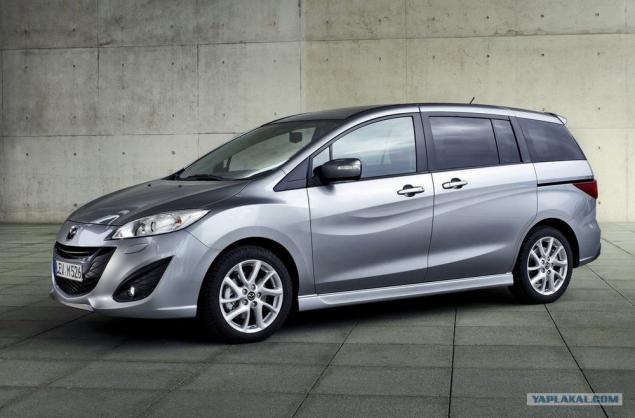
Due to the low demand is not delivered is not an outdated Ford Grand C-Max, is not offered and Renault Grand Scenic, Volkswagen Touran and is now in "anticipation" successor. However, its exact appearance is also not clear, and the current Touran seven-seater offers the performance of optional only to order - that's a plus 29,000 rubles, and the loss of a full-size spare wheel.
Lucky
In this situation, the newcomer groped his way in 2011, the 7-seater Chevrolet Orlando 4652 mm in length, created on the platform of Chevrolet Cruze. What's played a role in the first place? Do not brutal appearance with "chopped" shapes and trim the type of crossover? But the facts speak for themselves - even in a difficult past in 2013 had sales in the black, and the biggest in the class. And all the "cream" of our Orlando shot with a single petrol engine (but with the MCP or 6-ACP), while the fall of 2013 came a powerful diesel version. It is even more expensive, but still accessible classmates with similar weapons.
Chevrolet Orlando
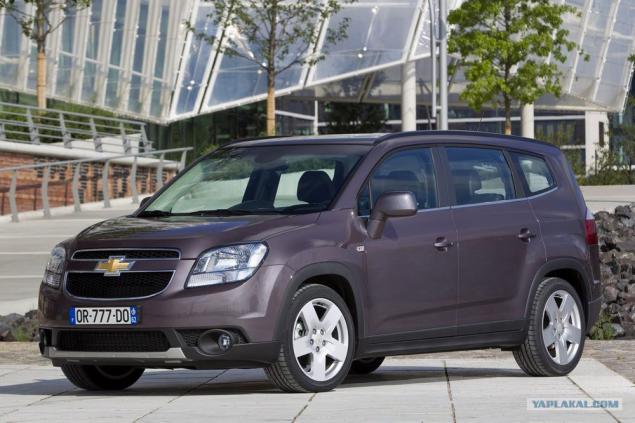
Click
In Russia, on the official market of minivans are not too in demand - in the passenger segment of their overall share in the past year, though increased slightly, but still amounts to less than 5%, and the models on sales tumbled. It is based on kompaktven and other categories, while the defendants with three rows of seats and less. Of course, for such a modest figure, not only affects small families of Russian families, but also the high cost of such vehicles, so they buy for personal use has lost relevance to the massive attack sverhuniversalnyh SUV. For corporate and business purposes is also a "non" - are in the course of over-capacity vans.

A bit of history
However, a private interest in cars with increased capacity in the country was for a long time. About marital bliss on wheels when you can sit down and load "the apartment", but still with features camper, dream of many. Yes dreamed about it themselves avtoinzhenery: "The Soviet Union needs hundreds of types of bodies produced in thousands and hundreds of thousands of copies, bodies not only practical, technically advanced, user-friendly, and beautiful." This is a wonderful word avtokonstruktora, designer and writer Yuri Dolmatovski, domestic ideologue wagon-car, whose conceptual work on "minivan" substantially ahead of time and might even please the people 50-60-ies. In this case, for example, characters in the film "Three plus two" went to the sea is not on a sedan "Volga GAZ-21" and absolutely worthless for such purposes "Zaporozhets" and on some domestic luxury "grand tourists" , commercially available based on the unique prototype US-013.
US-013 (pictured left). Concept odnoobemnika 1951 authored by JA Dolmatovski for its time was outstanding not only in the Soviet Union. Monocoque length of five meters with the setting on the roof doors, fully independent suspension, rear engine (and originally planned boxer) and automatic (!) Gearbox. With smaller dimensions than the winters interior was roomy - this is the leitmotif of the concept

Alas, even in Soviet times, these dreams remained unfulfilled - five-year plan did not include the development of multi-car mass application. Accordingly, even if they wanted to engineering design housing industry could not offer ordinary citizens the serial, and most importantly - a relatively inexpensive minivan or even a wagon with increased capacity (OLA). But this does not mean that they were not at all - experienced, experimental, improvised, and even small-scale versions of "monocab" still appear.
Yes, what! Suffice it to recall glimpsed in the comedy Gaidai "Caucasian Captive" incredible for the time "mikrach" with elements Aerodesign. And in fact it was not a foreign car or piece-homemade. A variant of the first Soviet minivan called the "Start" and appeared thanks to enthusiasts of one of the auto-repair enterprises in the USSR. On units GAZ-21 with an original body of fiberglass in the early 60s it was made more than a hundred copies, including the option camper. Industrial development of this "custom" will not work, but because of the film and "illumination" at the Exhibition of Economic Achievements of the people he played the role of promoter of a car with increased capacity.
Minibus "Start". This famous fiberglass "custom" for the GAZ-21 units at the beginning of the 60s even won the "high" approval of the government. However, for a wide "development" of a private project was too expensive and the raw, all over small-scale assembly and advocacy role monocab

After all evolution in our country and abroad minivans get as a kind of symbiosis with increased capacity (OLA) and "vagonnikov" - so-called polukapotnoy layout where the interior of the engine and the front wheels: spacious, safe, with optimal driving characteristics. It is believed that in the present understanding of the minivans were formed in the '80s, when the United States emerged Chrysler Voyager (ilk counterparts on concern) in Europe Renault Espace, and in Japan - Mitsubishi Space Wagon.
At the same time, the project AZLK Moskvich-2141 work was carried out to establish its minivan, the appearance and functionality of the interior, he did not concede, and in some ways, and superior foreign analogues. The same transformation of seats seems to include all possible options, including a configuration with a turn down towards each other - right now, not all foreign minivans offer such an opportunity. Scale models were built (by the way, looks very similar to the Mitsubishi Space Wagon), but that's all over. Attempts to revive the idea in the mid-90s, too, failed.
Russian «Hope»
Yet an example of how domestic minivan ever mass production there - under the brand name of AvtoVAZ. Created on the basis of an extended "Niva", the 7-seater monocab VAZ-2120 unambiguously called "Hope" and was a completely original design. It was the first domestic car is a minivan with the layout - polukapotny with "vertical" landing and three-row seating. Plus a permanent four-wheel drive, together with the big wheels and high ground clearance. And it is the only example in the Russian automobile industry, when the old dream embodied let in small, yet mass production - from 1998 to 2006 in the RFP was issued more than 8,000 copies.
And in 2002, the car has undergone a restyling - rather ugly chetyrehglazogo "muzzle" there was a decent lined with lights from the "tens". But as often happens with us, the product is not ripe or overripe, in general, does not fit harmoniously in the era - the ratio quality / price does not hold water at a time when the market was already possible to buy foreign "vans" for every taste, including " terrain. " Plus devouring offensive segment SUV. Demand fell, rolled up unprofitable production - "Hope" died first and last in the subject of domestic minivans.
VAZ-2120 "Hope»

In any case, "passenger", because "the cargo" chassis serial domestic minivan yet appeared - at the turn of the century GAS released more compact than the Gazelle, a family of "Sobol", where there was a place for the passenger version, including "luxury" " Barguzin ". Roughly, but the topic is closed without question: polukapotnaya layout, rear-wheel drive with single rear wheels, independent front suspension and a roomy interior with accommodation options not only ten, but six passengers with the terms "increased comfort". There are versions with four-wheel drive! It would seem, here it is, our global revenge in this segment. And yet, as the family car "Sobol" / "Barguzin" did not get the broad "approval", which could count the "father" of domestic MPV Yuri Dolmatovsky.

GAZ "Sobol" / "Barguzin»

Yes, truly meet the demand for this type of transport only happened after the collapse of the Soviet Union, when the country said "welcome" foreign auto industry. First and foremost, of course, through the second hand, because of the new proposal did not differ democratic. But there was something exceptional - then under a new designation MPV (Multi Purpose Vehicle) began to appear a lot of machines. Besides those mentioned above, since the mid 90's intensified onslaught of Europeans: there was jointly developed by the front-wheel trio Ford Galaxy, VW Sharan and Seat Alhambra, and the cooperation with Fiat PSA issued a quartet of their similar monocab.
Noticeable diversity makes Japanese. Thus, Mitsubishi, along with front-Space Wagon offered and all-wheel drive version, moreover, in the arsenal had completely "off-road» Space Gear 4WD - minivan on an aggregate basis of Pajero. Honda is the serial output in the space of his "sons": in addition to the traditional seven-seat Shuttle (analogue Odyssey) and a little less time to Stream to please and very original FR-V. He was even smaller and differed only two rows of seats, but with an optional third borough ahead - with the expectation of the child. It was an interesting option kompaktven (length 4285 mm) with advanced capabilities in the literal sense, but it was sold, however, short-lived (2004-2009). In addition, we curled up on this model the company's activities in this segment.
Mitsubishi Space Wagon

and Toyota Previa

On gray channels received original minivans Toyota Previa, who for 90 perceived as descended from the podium concepts - spherical body, "space" interior and the unusual layout of the chassis with rear wheel drive and placing the engine behind the front axle almost horizontally beneath the floor. If you do not touch the issues of ease of maintenance, a car is probably closest to the realization of the ideals of threads monocab on all key parameters (design, storage space, security, manageability).
Our time
But dynasties minivans on the official market all somehow did not develop - model appears not very loud, and so quietly went. And now the situation is ambiguous. On the one hand, the segment is multiplied its aggressive use of passenger and cargo platforms in various configurations interior layout. But on the other hand, the Russian market is still seen instability offers competitive advantages and weaknesses, especially in models with a capacity of more than five people. With innovations in sparsely-term, also in the light of the current situation, manufacturers change their views of the market. However, not so long ago some people were able to "blow up" the segment.
Sales of some wagons and minivans with the possibility of three-row passenger accommodation in the Russian Federation for 2013 (according to AEB)

Let your minivan at AvtoVAZ disappeared, the theme here safely returned after six years: in 2012, this is the same area gave OLA People dreamed of in the Soviet Union - Lada Largus. With a length of 4470 mm and a height of 1636, today is the most affordable and read - foreign (in fact, renamed Dacia Logan MCV) station wagon with a high roof and the ability to accommodate three-row passengers. Quintuple nominally, Largus 7-seater version comes with an improved version of equipment, on the third row of seats can be arranged not only children, while still a small trunk with 135 liters. That's just an understanding of the scheme 5 + 2 is not quite typical - backseat whole or recessed into the floor, folded vertically. That is, for a full cargo volume Rear sofa have just dismantled, but this is not difficult.

Lada Largus. Versions 7 seats (with driver) are available with two engine options and trim levels improved "Norma" and "Lux", which means at least two airbags, ABS, air conditioning, heated front seats, CD, AUX, and even Bluetooth. Version "Luxury" adds tripcomputer, advanced electro, tumanki, alloy wheels, leather steering wheel, roof rails

Around analogues for Largus no direct or indirect. Because even a group of "utilitarian" kompaktven family of passenger and cargo vans type Fiat Doblo Panorama, Renault Kangoo and Citroen Berlingo can only compete in terms of simplicity and functionality, but with the 5-seater version and a higher cost.
In this group, however, stands out Volkswagen Caddy, where passenger family Kombi covers many needs, including (optional) in the all-wheel drive. Here and korotkobaznoy versions have the opportunity to order the third row of seats, and to elongate (4876 mm) versions are ready Maxi 7-seater versions. In this case, the third row is also not "drown" in the floor, but when fully decomposed seat trunk is a decent 530 liters - this is a full-size minivans indicators. In addition, already in the database Caddy relatively well equipped (two pillows, ESP, air conditioning, power accessories heated washer nozzles), and Maxi range offers a choice of two engines - petrol 1 2 turbo diesel and 2, 0 liters. But here and the price is not arguing with the models of economy class.

Volkswagen Caddy

At the end of the year, if the plans will not change, will Ford Tourneo Connect a new generation, which will also be passenger versions. Perhaps the price is less than a Caddy, but somehow I can not believe that this change the situation.
Kompaktven, built upon a passenger C-segment models suggest high technical level of comfort and equipment already in the database. Modern models are generally all the places of the second and third row of separate, which makes a highly flexible interior transformation. This is only the third row is optional, more precisely, in his presence has its own nuances. So, the new Toyota Verso (length 4440 mm) of five complete sets only option 5 + 2 considered for the most prestigious in the literal sense - a version of the Prestige and the highest price, but why not make a choice? Sales, though not the lowest, but obviously at the expense of the less expensive 5-seater version.
Toyota Verso

Another approach at the Mazda5 - then a bigger size (length 4585 mm), the engine with a box of conventional (2, 0-liter aspirated and 5-speed automatic transmission), with seven seats split third row normally, independent rear suspension and a sliding door. Two versions of the equipment cover all needs, except perhaps the most advanced of the whims of the media. Here it is, a sample of the many values in the classroom. But the price is also bites, as evidenced by the small and falling sales. Meanwhile, the model designed to "stretch" the platform of the previous "three" is already coming off the stage - during 2014 it is still possible to buy, but about replacing concrete information yet.
Mazda5

Due to the low demand is not delivered is not an outdated Ford Grand C-Max, is not offered and Renault Grand Scenic, Volkswagen Touran and is now in "anticipation" successor. However, its exact appearance is also not clear, and the current Touran seven-seater offers the performance of optional only to order - that's a plus 29,000 rubles, and the loss of a full-size spare wheel.
Lucky
In this situation, the newcomer groped his way in 2011, the 7-seater Chevrolet Orlando 4652 mm in length, created on the platform of Chevrolet Cruze. What's played a role in the first place? Do not brutal appearance with "chopped" shapes and trim the type of crossover? But the facts speak for themselves - even in a difficult past in 2013 had sales in the black, and the biggest in the class. And all the "cream" of our Orlando shot with a single petrol engine (but with the MCP or 6-ACP), while the fall of 2013 came a powerful diesel version. It is even more expensive, but still accessible classmates with similar weapons.
Chevrolet Orlando




















